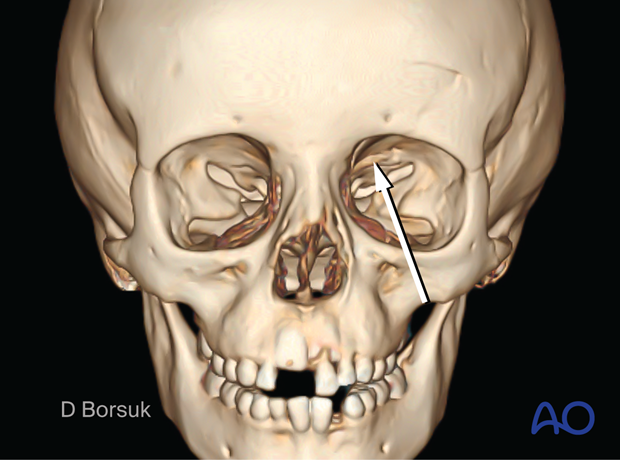Observation
Due to the high incidence of greenstick fractures and the rapid reossification and remodeling, conservative treatment is often the best treatment in a pediatric patient.
Please refer to general considerations on pediatric fractures for further details.
Orbital roof fractures are more common in children than in adults due to the absence of sinuses. In children, we tend to observe fractures of the roof that cause no functional or esthetic changes.
Ophthalmological evaluation should be performed on all children who suffer orbital fractures.

Follow-up
Due to bone remodeling and bone growth, fractures usually heal without any sequela.
Follow-up is performed at three weeks, once the swelling has subsided, to reevaluate if any functional or esthetic issues have arisen.
Later follow-up is performed at three months, six months, and one year to ensure that no growing skull fracture is observed.
Growing skull fractures
Growing skull fractures may occur in young children below the age of 7-year-old. The rapid expansion of the brain in the first two years, and the dura's pulsation, may prevent re-ossification at the fracture site and, therefore, may present with globe pulsation and other clinical symptoms.













